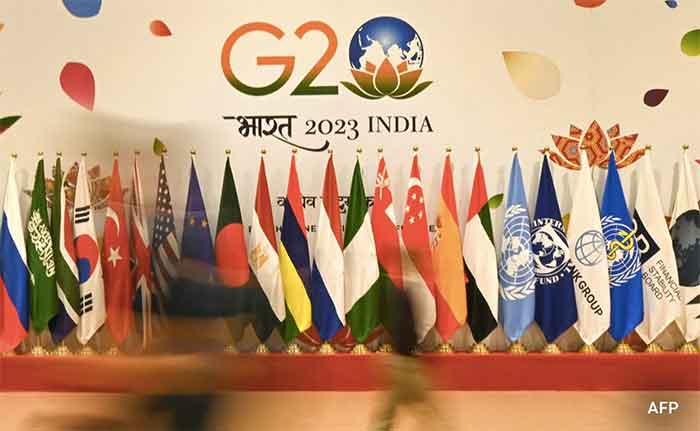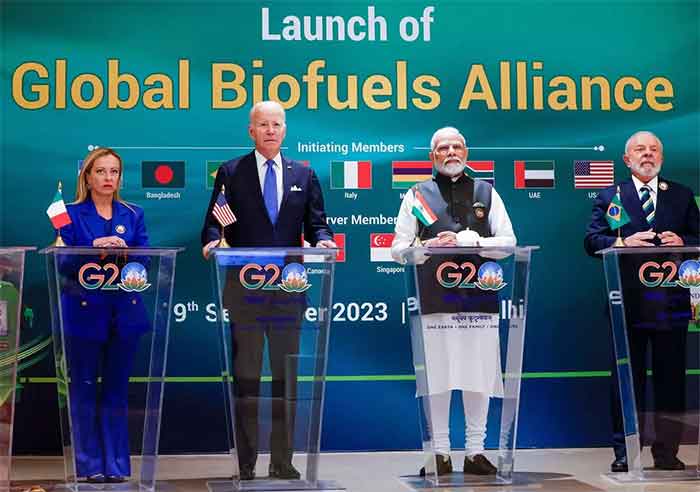
The rapid rise of the BRICS is transforming the global economy, with the group’s share of world gross domestic product (GDP) in terms of purchasing power parity (PPP) set to rise well beyond of that of the Group of Seven (G7) major advanced economies, Bloomberg reported this week.
BRICS currently comprises Brazil, Russia, India, China, and South Africa, but the group will be joined in January by Argentina, Egypt, Ethiopia, Iran, Saudi Arabia, and the UAE.
The G7 club of industrialized and developed countries consists of the U.S., Canada, the UK, France, Italy, Germany, and Japan.
The report indicated that the expanded BRICS are already larger than the G7. In 2022 the bloc accounted for 36% of the global economy, versus 30% for the advanced economy group.
“Our forecasts suggest an expanding workforce and ample room for technological catch-up will boost the BRICS+ share to 45% by 2040, compared with 21% for G7 economies. In effect, BRICS+ and the G7 will have swapped places in relative size between 2001 and 2040,” Bloomberg wrote.
The outlet also pointed out that the expanded BRICS economic group will contain some of the world’s largest oil exporters, namely Saudi Arabia, Russia, UAE and Iran, as well as some of its biggest importers – China and India.
“If it [BRICS] succeeds in shifting some settlement of oil transactions toward other currencies, that could have a knock-on effect on the share of the dollar in international trade and global foreign exchange reserves,” the report added, noting that the BRICS members have been working actively to abandon the U.S. dollar in their trade.
While highlighting the advantages of BRICS, such as its size, diversity and ambition, the report also pointed out some of the challenges facing the group, including China’s economic slowdown, the inability to shift away from the petrodollar in the near future, as well as a ‘reluctance’ to promote a single alternative.
“The BRICS will change the world, but perhaps more because of their rising share of GDP and divergent political and economic systems than through the realization of policymakers’ grand plans,” said Bloomberg.
BRICS Trade Surges Ahead Of Enlargement
An earlier Bloomberg report said:
The five current members of the BRICS group increased trade by 56% from 2017 to 2022, reaching some $422 billion worth of turnover last year.
According to analyst estimates, the expanded group will represent nearly half of global output by 2040, doubling the share of the G7.
Earlier this year, Russian President Vladimir Putin claimed that BRICS already outpaced the G7 states in terms of the PPP of their populations.
Experts project the combined GDP of the expanded BRICS in terms of PPP to amount to roughly $65 trillion. This would push the group’s share of global GDP up from the current 31.5% to 37%. In comparison, the share of the G7 is currently around 29.9%.
BRICS was originally ‘BRIC’, a term coined by economists using the first letter of four nations – Brazil, Russia, India, and China – that were seen as having the potential to dominate the world economy in the 21st century. These countries first came together in 2006 and later welcomed South Africa as a new member, adding the letter ‘S’ to the acronym.
Originally formed largely for the purpose of highlighting investment opportunities among members, the group has become instrumental in building a new “multipolar” world order that will help give a stronger voice to the Global South.
In 2014, the BRICS group launched its own international lender, the New Development Bank (NDB), which was seen as an alternative to U.S.-dominated financial institutions such as the IMF and World Bank. It provides funding for infrastructure and sustainable development projects.
The bank formally opened for business in 2015, and was later joined by Bangladesh, the UAE, Egypt, and Uruguay.
BRICS Economies Now Larger Than G7, Says Putin
An earlier report said:
The BRICS nations have overtaken G7 states in terms of the PPP of their populations, Russian President Vladimir Putin said on Monday in an interview with China Media Group.
“As for BRICS, at the time of the summit in Johannesburg [in August], the ratio of the economies of the G7 countries and the BRICS countries was already in favor of BRICS in terms of purchasing power parity,” Putin said.
According to Putin, the BRICS expansion will prove beneficial to the group, which has historically positioned itself as an alternative to Western-dominated international institutions.
The Russian leader further argued that the move clearly reflects the ongoing formation of a new multipolar world.
“This means that every country joining BRICS supports the idea and concept of forming a multipolar world, as no one wants to play second fiddle to a ruler, seeking equal relations,” he said.
Earlier this year, UK-based economic research firm Acorn Macro Consulting reported that BRICS member nations had surpassed the G7 in terms of GDP based on PPP.
According to the analysts, the five BRICS nations accounted for nearly 31.5% of global GDP, compared to 30.7% for the G7.















































